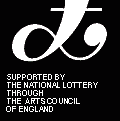Some haiku are a single image (the kind Basho refers to when he speaks of a haiku being "like gold beaten to its utmost thinness"); very rarely they have three images; but the majority are composed of two images, separated by a "cut." Lee Gurga, former President of the Haiku Society of America, believes that the two-image haiku are the finest ones. He claims that the art of cutting is "the primary technique of haiku."
The two images of which the poem is constructed "resonate" with each other to create a mood, atmosphere or impression. The link between the two images is not specified ( you do not have logical link-words such as ‘but’ and ‘because’ and ‘like’). The reader is left to make the link, and thus to "step inside" the haiku, sharing it, in some sense, with the author.
Features of the relationship between the two parts of the haiku:
» In Japanese the two sections are separated by a kireji or "cutting word." In English translation this is represented by a punctuation mark (an exclamation mark for emphasis, or the useful all-purpose dash, most commonly). Sometimes the effect of the kireji is expressed by "Alas!" or "Ah!"
» One image is not a "comment" on the other, or a summary of it. Nobuyuki Yuasa writes: "In many poems, the short line separated from the other two lines by a dash reads almost like a title or a summary, so that the cutting word does not really bring together words belonging to two different levels of meaning. In other words, in spite of the cutting word, the entire poem reads like one phrase making one statement. I am not saying that this is wrong. This is one way of writing haiku, but there is another way, which is, at least to me, more interesting: one statement consisting of two half-independent phrases." (Blithe Spirit Vol 8 No 3 p21)
» It is not good practice to have one the cause and one the effect (For example: "Married couple / huddled under one umbrella – / spring rain"). The two halves should ideally be of more or less equal status and complement each other in mysterious ways, not obvious ones. David Cobb of the British Haiku Society advises that the poem is often better if you leave out the cause (for the reader to guess) and give two effects. In our example above we might substitute for the last line another effect of rain that resonates well with the married couple, perhaps something like, "the concrete darkens."
» The break between the two images usually cuts the poem into one short line unit and one longer unit of two lines. The break comes at the end of line one or line two. Rarely, it comes in the middle of the middle line and splits the poem symmetrically.
» The images are often quite sharply different from each other (but with an element of possible correspondence). For example, the following successful haiku by Maggie West:
Shelling peas –
Hard rain falling
On the chimney cowling.
What is the mysterious sympathy between the two images? Is it that peas and raindrops, though apparently unrelated, are small and numerous? Or is it just the cosy domesticity of preparing food when it’s raining outside?
By Michael Gunton and George Marsh

